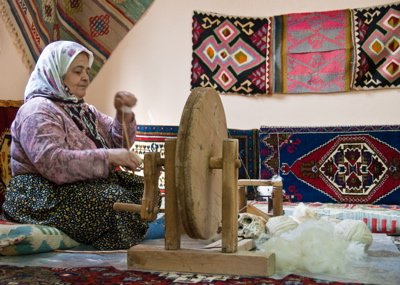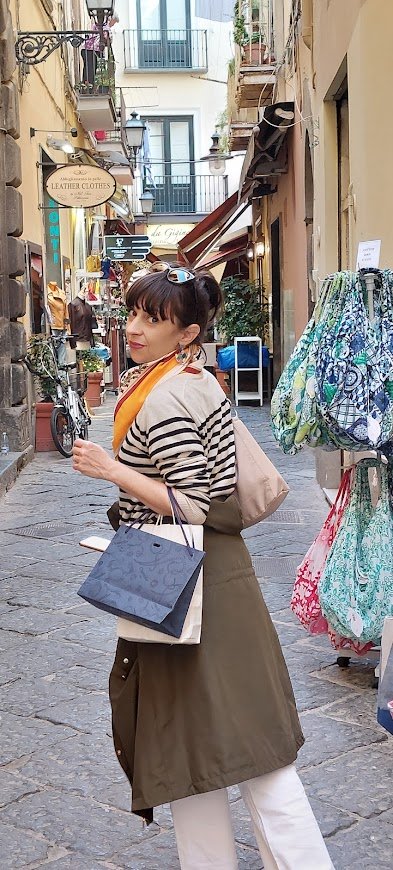Turkish Kilim Rugs -
Turkish Rug Guide
"Turkish kilim rugs - what makes them different from other Turkish Oriental rugs..."
Turkish kilims are a good way to start working on your Turkish rug collection.
When you start your Kusadasi shopping adventure, you will definitely want to take home at least some sort of Turkish Oriental rugs. Turkish kilim rugs will do if you came with a really tight budget.
If you don't know much about Turkish Oriental rugs you must be wandering what the difference is between a Turkish rug or carpet and a kilim.
Turkish kilims are flat-weaves which means their designs are made by interweaving different colored wefts and warps. That way, a pile-less flat surface is produced.
On the other hand, what's typically called a Turkish rug or carpet has a pile! It is created by hand knotting differently colored wool or silk strands around two adjacent warp strands, so that the ends of the yarn stick up to form the pile of a rug.
Production of Turkish kilims goes back to Neolithic times. Fabrics made in the first weaving techniques were used for utilitarian objects and not for decoration: as floor coverings protecting from cold, tent opening covers protecting from heat, donkey covers, grain bags...

What you will really love about Turkish kilim rugs is that their typical geometric and bold designs fit into both rustic decors as well as very modern homes.
Their use is very versatile even today...you can use them as wall-hangings, door hangings, sofa covers or armchair throws.
Another thing we really love about them is that being quite affordable, many Kusadasi cruise guests will get them as Turkish souvenirs for friends and family back home.
If you're interested in more details on Turkish kilims, make sure you check here.
If you are looking for a reputable tour guide that will take you to the villages where kilims and rugs are made check our page Daily Ephesus Tours.

With over seven years working aboard cruise ships as a port guide and shopper assistant, I’ve helped thousands of passengers get the best from their days ashore in Dubrovnik. Now, I want to make you Med confident!
TAKE A SHORTCUT TO TOP 30 MOST VIEWED PAGES OF 2025:
4. Capri ferry
10. Livorno Italy
13. Naples to Capri
16. Messina Sicily
17. Pisa Train
18. Visiting Pompeii
19. Pompeii forum
20. Port of Piraeus
22. Venice vaporetto
23. Venice water bus
24. Livorno map
25. Getting to Zadar
27. Walk Venice
28. Mykonos beach
29. Lucca Italy
30. Pomepii homes













